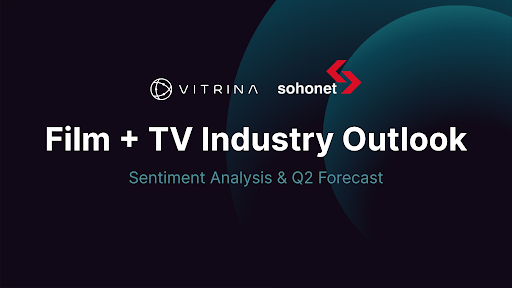Introduction
Hey there! If you’re in the media and entertainment (M&E) industry, you know the supply chain is a beast.
From the first spark of an idea to getting that blockbuster or binge-worthy series in front of audiences worldwide, it’s a complex journey.
But what about the things that can go disastrously wrong?
Ignoring the Top 5 Risk In Media and Entertainment Supply chain isn’t just risky; it can be catastrophic for your projects and profits. I’ve seen it happen, and it’s not pretty.
The M&E supply chain involves so many moving parts – creative development, financing, production, post-production, distribution, and marketing. A hiccup in one area can send ripples, or even tidal waves, throughout the entire process.
In this post, I’m going to walk you through these critical risks and, more importantly, how you can tackle them head-on, so you can sleep a little better at night.
Table of content
- Introduction
- Key-Takeaways
- Risk 1: The Ever-Looming Threat of Content Security Breaches and Piracy
- Risk 2: Navigating Production Delays and Disruptions
- Risk 3: The Critical Challenge of Talent and Skills Shortages
- Risk 4: Warding Off Crippling Cybersecurity Threats
- Risk 5: Managing Financial Complexities and Compliance Hurdles
- How Vitrina Helps You Stay Ahead
- Conclusion
- FAQs
Key Takeaways
| Risk Area | Key Challenge | Primary Mitigation Strategy |
|---|---|---|
| Content Security & Piracy | Unauthorized access and distribution of valuable IP. | Robust digital rights management (DRM) and watermarking technologies. |
| Production Delays & Disruptions | Unforeseen events (e.g., pandemics, strikes, weather) halting or slowing production. | Contingency planning, diversified locations, and agile project management. |
| Talent & Skills Shortages | Difficulty finding and retaining specialized creative and technical talent. | Investment in training, global talent sourcing, and fostering strong industry relationships. |
| Cybersecurity Threats | Data breaches, ransomware attacks on sensitive production or business data. | Comprehensive cybersecurity protocols, employee training, and regular security audits. |
| Financial & Compliance Risks | Budget overruns, complex international financing, and evolving regulatory landscapes. | Transparent financial tracking, expert legal counsel, and proactive compliance checks. |
Is Your M&E Project at Risk?

Risk 1: The Ever-Looming Threat of Content Security Breaches and Piracy
Let’s be blunt: content is king, and protecting that king is paramount.
The M&E industry loses billions each year to piracy. It’s not just about lost revenue; it’s about devaluing your creative work and potentially leaking sensitive pre-release content. Think about the impact of a major film script or an unreleased series episode hitting the web prematurely. Ouch.
Understanding the Piracy Landscape
Piracy isn’t just one thing. It ranges from illegal streaming sites and P2P sharing to sophisticated operations that intercept broadcast feeds. The methods are constantly evolving, which means your defenses need to as well.
Key Strategies to Combat Piracy:
- Robust Digital Rights Management (DRM): Implementing strong DRM solutions is non-negotiable for controlling access to your content.
- Forensic Watermarking: This allows you to trace the source of leaks, acting as a powerful deterrent and an investigative tool.
- Anti-Piracy Services: Partner with specialized firms that actively monitor and take down pirated content.
- Educating Consumers: While harder to quantify, raising awareness about the impact of piracy can shift consumer behavior over time.
Remember, a layered security approach is always more effective than relying on a single solution. You need to make it as difficult as possible for pirates to access and distribute your assets.
Risk 2: Navigating Production Delays and Disruptions
If there’s one constant in production, it’s the potential for unexpected delays.
We’ve seen entire industries grind to a halt due to unforeseen global events. But even on a smaller scale, issues like equipment failure, location unavailability, talent illness, or labor disputes can throw your entire schedule and budget off track.
These disruptions are a major component of the Top 5 Risk In Media and Entertainment Supply chain.
Sources of Production Disruptions:
- External Factors: Pandemics, natural disasters, geopolitical instability, union strikes.
- Internal Factors: Key personnel unavailability, creative differences leading to re-shoots, technical failures, on-set accidents.
Mitigating Production Delays:
- Comprehensive Contingency Planning: What’s your Plan B? And Plan C? Have backup locations, crew, and even script adjustments ready.
- Agile Project Management: Adopt flexible workflows that can adapt to changing circumstances quickly. Rigid plans break easily.
- Insurance: Ensure you have adequate production insurance to cover a wide range of potential disruptions.
- Clear Communication Protocols: When things go wrong, quick and clear communication across all departments is vital to manage the fallout. Vitrina’s Project Tracker can be invaluable here for real-time updates.
The goal isn’t to prevent all disruptions – some are simply out of your control. It’s about building resilience into your production pipeline so you can recover faster and minimize the damage.
Risk 3: The Critical Challenge of Talent and Skills Shortages
You can have the best script and the biggest budget, but without the right talent – both in front of and behind the camera – your project can falter.
The M&E industry relies on highly specialized skills, from VFX artists and sound engineers to experienced line producers and visionary directors.
The Talent Squeeze:
With the explosion of content creation driven by streaming platforms, the demand for skilled professionals has skyrocketed. This creates fierce competition for talent and can lead to:
- Increased Labor Costs: High demand pushes salaries and day rates up.
- Project Delays: Difficulty in crewing up can delay start dates.
- Quality Compromises: Settling for less experienced talent due to unavailability can impact the final product.
Strategies for Addressing Talent Gaps:
- Invest in Training and Development: Nurture new talent through internships, apprenticeships, and in-house training programs.
- Global Talent Sourcing: Look beyond your local market. The world is full of incredible talent. Platforms that connect global M&E professionals can be a goldmine.
- Build Strong Industry Relationships: A good reputation and strong network can make attracting top talent easier.
- Focus on Retention: Create a positive and supportive work environment to keep your best people.
Finding the right partners and talent is crucial. That’s where understanding the global landscape of service providers, like those cataloged on Vitrina, becomes incredibly powerful.
Stop Guessing, Start Knowing.

Risk 4: Warding Off Crippling Cybersecurity Threats
The M&E industry is a prime target for cyberattacks. Why?
Because you handle a vast amount of valuable data: pre-release content, sensitive financial information, personal data of cast and crew, proprietary production workflows, and intellectual property.
A breach can lead to devastating financial losses, reputational damage, and legal liabilities.
Common Cyber Threats in M&E:
- Ransomware: Attackers encrypt your files and demand a ransom for their release. Imagine your entire post-production workflow being held hostage.
- Data Breaches: Theft of sensitive information, including employee data or confidential scripts.
- Phishing Attacks: Tricking employees into revealing login credentials or installing malware.
- Denial-of-Service (DoS) Attacks: Overwhelming your systems to disrupt services, like a streaming platform launch.
Bolstering Your Cybersecurity Defenses:
- Multi-Factor Authentication (MFA): A simple yet highly effective layer of security.
- Regular Security Audits & Penetration Testing: Proactively identify and fix vulnerabilities.
- Employee Training: Your staff are your first line of defense. Educate them on recognizing and reporting threats.
- Secure Cloud Infrastructure: If using cloud services (and who isn’t?), ensure they meet high security standards.
- Incident Response Plan: Know exactly what to do when (not if) an incident occurs.
Don’t treat cybersecurity as just an IT issue; it’s a critical business risk that needs attention from the top down.
Risk 5: Managing Financial Complexities and Compliance Hurdles
Making movies and shows is expensive, and the financial side of the M&E supply chain is fraught with risk. Budget overruns are common, funding can be complex (especially for international co-productions), and a web of legal and regulatory requirements needs careful navigation.
Key Financial and Compliance Challenges:
- Budget Management: Keeping massive, multi-faceted projects on budget requires meticulous planning and tracking.
- Securing Funding: From pre-sales and gap financing to equity investments, the funding landscape is diverse and competitive.
- Tax Incentives and Rebates: Maximizing these requires expert knowledge of varying local and international schemes.
- Rights Management & Royalties: Ensuring accurate tracking and payment of royalties across numerous territories and platforms is a huge task.
- Evolving Regulations: Data privacy laws (like GDPR), content regulations, and labor laws are constantly changing.
Strategies for Financial and Compliance Health:
- Transparent Financial Tracking Systems: Utilize software and platforms that provide real-time visibility into spending.
- Expert Legal and Financial Counsel: Don’t skimp on hiring professionals who understand M&E-specific finance and law.
- Thorough Due Diligence: Vet all financial partners and ensure compliance requirements are understood upfront.
- Proactive Compliance Monitoring: Stay updated on regulatory changes in all jurisdictions where you operate.
Effectively managing these financial and compliance risks is key to profitability and sustainability in the M&E sector.
How Vitrina Helps You Stay Ahead
Navigating the Top 5 Risk In Media and Entertainment Supply chain demands visibility, reliable data, and connections.
This is precisely where Vitrina steps in. Our platform provides a comprehensive global database of vendors, partners, and service providers across the entire M&E supply chain.
Whether you’re looking to diversify your post-production partners to mitigate disruption risks, find specialized VFX talent, or identify companies with robust security credentials, Vitrina’s Solution offers the insights you need.
By empowering you with data-driven discovery and due diligence capabilities, Vitrina helps you make more informed decisions, connect with trusted partners, and ultimately de-risk your supply chain operations.
Conclusion
So there you have it – the Top 5 Risk In Media and Entertainment Supply chain and actionable strategies to tackle them. It might seem daunting, but awareness is the first step.
By understanding these risks – content security, production disruptions, talent shortages, cybersecurity threats, and financial/compliance issues – you can start building a more resilient and robust supply chain.
Don’t wait for a crisis to hit. Proactive risk management isn’t just a defensive move; it’s a strategic advantage that can save you millions and protect your hard-earned reputation. The M&E landscape is dynamic, but with the right approach and tools, you can navigate its complexities with greater confidence.
What’s the first strategy you’re going to try? Or which risk keeps you up at night the most? Let me know in the comments.
Ready to get serious about de-risking your M&E operations and finding trusted global partners? Take control with enhanced visibility. I encourage you to explore how Vitrina can empower your decisions and strengthen your supply chain. Sign up for Vitrina today!
Frequently Asked Questions
While all five are critical, many would argue that content security and piracy pose the most direct and consistent financial threat, as content is the core asset of the industry. However, the impact of major production disruptions can also be financially catastrophic.
Technology plays a huge role! From DRM and watermarking for content security, AI for predicting production delays, cloud-based collaboration tools for remote talent, advanced cybersecurity software, to platforms like Vitrina for partner discovery and risk assessment – tech is essential.
Yes, things like the ethical and logistical implications of AI in content creation, deepfakes, evolving data privacy regulations globally, and the increasing impact of climate change on production locations are all emerging concerns.
It’s incredibly important. Your supply chain is only as strong as its weakest link. Thoroughly vetting your vendors for financial stability, security practices, and track record is a key proactive step in risk mitigation. Tools that provide transparency into the vendor ecosystem are invaluable here.




































